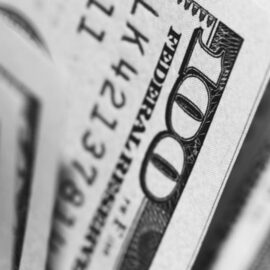

This article is an excerpt from the Shortform book guide to "The Intelligent Investor" by Benjamin Graham. Shortform has the world's best summaries and analyses of books you should be reading.
Like this article? Sign up for a free trial here .
What are the different types of bonds? Are some better to invest in than others?
There are six different types of bonds you can invest in. In The Intelligent Investor, Benjamin Graham explains these different types of why they might be good investments.
Read more about the different types of bonds and what to invest in.
The Different Types of Bonds: Zweig’s Commentary
In his modern commentary, Zweig offers the following additional tips:
- Most bonds are sold in $10,000 lots, and you need at least 10 bonds to diversify away the risk of default. Therefore, unless you have $100,000 to invest in bonds, you should invest in bond funds instead. These diversify over a wide basket of bonds without your needing to do individual research.
- If you really want to buy individual bonds, instead of buying short-term or long-term bonds, strike the middle: 5-10 year maturity dates. These have more dampened fluctuations than long-term bond prices, while they capture more upside than short-term bonds.
Different Types of Bonds
When deciding what bonds to buy, there are more considerations:
- Tax status: some bonds provide tax-free coupon income, while others are taxable.
- Maturity date: are bonds with shorter terms or longer terms better?
- Risk of default: a borrower defaults when it’s unable to make payments on its loans. The borrower may ultimately declare bankruptcy, and the bond may lose a substantial part of its value. Thus, higher-risk borrowers can only issue bonds at higher interest rates—its lenders demand the extra payments to compensate for the higher risk of bankruptcy.
For tax status, the question is straightforward—a taxable bond should compensate for your income tax bracket with a higher coupon. For example, if your tax bracket is 30%, then a tax-free bond with a 7% coupon and a taxable bond with a 10% coupon are equivalent. Thus, a tax-free bond with a coupon rate higher than 7% would be relatively more attractive, and likewise for a taxable bond with a coupon higher than 10%.
Don’t buy tax-free bonds in your retirement accounts, like your 401(k) or IRA. In these tax-advantaged accounts, you should hold taxable bonds instead.
To address other issues, Graham provides an overview of the major different types of bonds. While the yields for all different types of bonds fluctuate over time, the general properties stay consistent.
US Savings Bonds (Series E)
- Maturity: Up to 30 years
- Federal tax: Yes | State tax: No
- Risk of default: Very low
Notes:
- Allows for redemption at any time. Graham notes that this unique flexibility could compensate for lower returns.
- Graham discusses Series H bonds, but these were discontinued in the early 2000s.
Treasury Bonds
- Maturity:
- Treasury bills: Up to one year
- Treasury notes: Between 2 and 10 years
- Treasury bonds: 30 years
- Federal tax: Yes | State tax: No
- Risk of default: Very low
State and Municipal Bonds
- Maturity: 1 to 30 years or more
- Federal tax: No | State tax: Yes (unless in state of issue)
- Risk of default: Moderate (check credit ratings—AAA to A is safe)
Corporation Bonds
- Maturity: 1 to 10 years or more
- Federal tax: Yes | State tax: Yes
- Risk of default: Moderate to high (check credit ratings)
Notes:
- Higher-yielding “junk bonds” provide a higher return with higher risk of default. Graham advises defensive investors to steer clear of these, since they require detailed study to find bargains.
Preferred Stocks
Like corporation bonds, preferred stocks are issued by companies, but they’re a hybrid of common stock and bonds:
- They pay a fixed dividend rate, but only if the company decides to pay a dividend. If the company can’t or doesn’t pay dividends, the preferred stock doesn’t produce any payments.
- Because the dividend is fixed, it caps the profits available to the preferred stock holder. Common stock does not have this cap.
- In a company’s liquidation, preferred stock has more senior rights than common stock, but lower than bonds and creditors.
In Graham’s view, this is the worst of both worlds: limited upside combined with higher risk. Thus, he advises defensive investors to stay away from preferred stock. He does note that other corporations might consider buying preferred stock, since corporations pay a lower tax rate on dividends than on income payments from bonds.
Income Bonds
Income bonds are issued by companies. With income bonds, interest isn’t guaranteed to be paid, unless the company has enough earnings to pay it. A company that pays interest on these bonds can deduct it from its taxable income, which makes it an especially cheap form of capital.
Graham notes that these should be used more often by corporations, but still have a historical stigma as being issued by financially weak companies.
Now that you know about the different types of bonds, you can choose the best bonds for you to invest in.

———End of Preview———
Like what you just read? Read the rest of the world's best book summary and analysis of Benjamin Graham's "The Intelligent Investor" at Shortform .
Here's what you'll find in our full The Intelligent Investor summary :
- Key advice from what Warren Buffett considers the "best book about investing"
- The 2 major indicators you should use for evaluating stocks
- How you can use aggressive or defensive investing strategies






